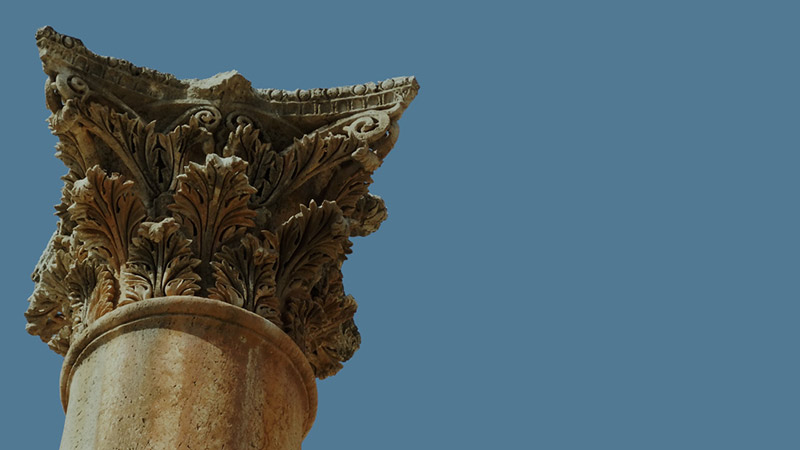Select Marker to See Location Name
You Searched "religious movements of jesus time"
-
Volume
15.2 | The Believers
-
Volume 7
Lesson 7.3 | An Unlikely Disciple
- LOAD MORE
- SHOW ALL
Updating...
Volume |
15.2 | The Believers |
Volume 7 |
Lesson 7.3 | An Unlikely Disciple |
Showing 12 of 408

The beginning of this arch, named after the British explorer who discovered it, still stands on the stones of Herod's retaining wall of the Temple Mount. Herod's distinctive style is demonstrated by the massive stones of the courses below the arch...
MORE
The second commandment forbade making images. Hellenistic culture glorified the human form. These two world views clashed in the days of Herod as he tried (and largely succeeded) to mold his kingdom into a Hellenistic one. He imported great number...
MORE
This aerial view shows the remains of Capernaum, a small village on the northern shore of the Sea of Galilee ("Capernaum" comes from the Hebrew Kfar Nahum, which means "Nahum's Village"). Jesus chose this place as the hub of hi...
MORE
Temple Sacrifices The people of ancient Israel made sacrifices to God in the temple. These sacrifices, which involved the shedding of blood (the pouring out of the animal's life), symbolized the atonement made for the people's sins.According to Go...
MORE
- Sardis stood in the middle of the Hermus River Valley, just over fifty miles east of the Mediterranean Sea in what is now the country of Turkey. The main east-west trade route came through this valley.- On a spur of Mount Tmolus, on the north si...
MORE
This stream is one of several that run out of the cliff at Caesarea Philippi. Originally, the springs ran from the cave known as the Grotto of Pan. The presence of a religious cult here is probably due to these springs of fresh water.Peter's confe...
MORE
These niches originally held statues of the pagan gods worshipped at Caesarea Philippi. The largest is actually an artificial cave that leads to a niche in the cliff itself. This niche apparently held a statue of Pan. Above it is another niche wit...
MORE
Authority given to a rabbi to proclaim his own interpretation of Torah, rather than simply referring to what other rabbis had said. The crowds were amazed at Jesus' teaching, because he taught like one who had "s'mikheh" (Matt. 7:28%u201...
MORE
Means "righteous ones." Wealthy Jewish aristocracy, claiming descent and authority from the high priest Zadok. Oversaw Temple; theology based on the first five books of the Bible; did not believe that God interfered in human lives or in ...
MORE
Name of a city and a region, The city was founded by Omri, king of Israel c.a. 880 BC, and Ahab built a magnificent palace there. Samaria became a center for Baal worship. It was destroyed by the Assyrians in 722 BC. During Jesus' time, it was a d...
MORE
A person from the country of Samaria (part of Palestine). The Samaritans were hated by the Jews because they had married non-Jews. They also worshiped God differently from the Jews. But Jesus showed his love for the Samaritans by going to them and...
MORE
Means "council." Jewish supreme court; highest religious council, composed of 70 members and the high priest. The number 70 traditionally was based on Moses' appointment of 70 elders (Num. 11:16) to administer Israel's affairs. Used by t...
MORE